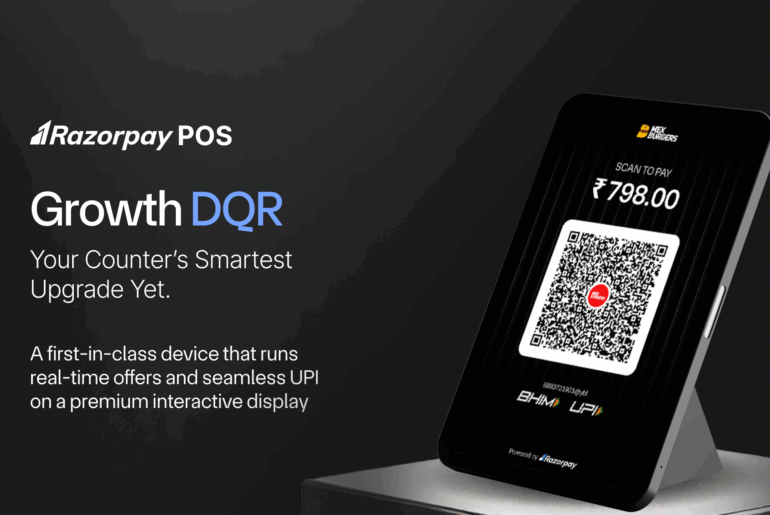A Point of Sale (POS) system is a traditional setup that allows businesses to process transactions at a fixed location. It typically includes credit card machines, a cash register, and inventory management software.
On the other hand, a Mobile Point of Sale (mPOS) is a portable version of a POS system. It allows businesses to process payments using a smartphone, tablet, or dedicated wireless device.
Table of Contents
Key Differences Between POS and mPOS
1. Portability
Traditional POS systems are fixed installations that require heavy hardware like desktop computers, cash drawers, and receipt printers, making them ideal for static business locations like retail stores and restaurants. On the other hand, mPOS systems are lightweight and portable, operating through devices like smartphones or tablets. This mobility allows businesses such as food trucks, pop-up shops, and on-the-go vendors to accept payments from anywhere, ensuring convenience and flexibility.
2. Easy Maintenance
Maintaining traditional POS systems can be labour-intensive and costly due to the need for regular hardware replacements and software updates. These systems often involve multiple components, increasing the likelihood of maintenance issues. Conversely, mPOS systems rely on cloud-based software, reducing the need for physical repairs or frequent upgrades. This simplicity makes mPOS a hassle-free option for businesses looking to minimise downtime and maintenance costs.
3. Installation Cost
Setting up a traditional POS system involves significant costs, as it requires multiple hardware components like credit card readers, receipt printers, and cash drawers. These upfront expenses can be a barrier for small or budget-conscious businesses. In contrast, mPOS systems have minimal setup costs, needing only a smartphone or tablet and a card reader, making them a more affordable option for businesses just starting out or those looking to expand operations without heavy investment.
4. Security
Both traditional POS systems and mPOS systems adhere to strict security standards like PCI DSS (Payment Card Industry Data Security Standard) and EMV2 (Europay, Mastercard, and Visa) to ensure secure payment processing. While traditional POS systems are known for their robust security in fixed environments, mPOS systems bring the same level of protection to mobile transactions.
5. Integration Capabilities
Traditional POS systems are well-equipped to integrate with tools like inventory management systems, customer databases, and accounting software, making them suitable for businesses with established, complex operations. However, mPOS systems offer enhanced integration options by connecting seamlessly with digital wallets, apps, and bill payment solutions. This capability allows businesses to provide multiple payment options and improve customer experience, making mPOS systems highly adaptable to modern consumer preferences.
Related Read: POP vs POS Explained
How Do Mobile Payments Differ from POS?
Mobile payments and POS systems serve distinct purposes in the payment ecosystem. Mobile payments refer to the use of digital apps like Google Pay, PayPal, or PhonePe, which enable users to transfer money directly from their smartphones. They are designed for quick, peer-to-peer transactions and are particularly favoured by small businesses for their simplicity and low setup requirements.
In contrast, POS systems (including mPOS) are hardware and software-based solutions used to accept card payments and manage transactions in a more structured manner. These systems are equipped with features such as inventory management, receipt generation, and reporting, making them ideal for businesses with more extensive operational needs. While mobile payments offer convenience and flexibility, POS systems provide a comprehensive solution for payment and business management.
Related Read: POS vs ERP: Key Differences Explained
Conclusion
mPOS stands out for its flexibility, portability, and user-friendliness when compared to traditional POS systems. While traditional POS systems are ideal for fixed locations and larger operations, mPOS provides small businesses with the freedom to process payments anywhere, using minimal hardware.
Whether you’re looking for a cost-effective, mobile solution or need a comprehensive setup for a larger establishment, understanding the differences between POS and mPOS helps you choose the best payment system for your business needs.
Frequently Asked Questions (FAQs):
1. What is the advantage of mPOS over normal POS?
mPOS offers portability, allowing businesses to accept payments anywhere using mobile devices. It’s cost-effective and ideal for small businesses or those on the go.
2. What are the disadvantages of mPOS?
mPOS may lack advanced features like inventory management. It also requires a stable internet connection and can raise security concerns due to the use of mobile devices for transactions.
3. What is the difference between smart POS and mPOS?
A smart POS is an advanced, fixed system with features like inventory management and reporting, while mPOS is a portable, mobile-based system for on-the-go transactions.
4. What does mPOS mean?
mPOS stands for Mobile Point of Sale, a mobile-based system allowing businesses to process payments through smartphones or tablets.



